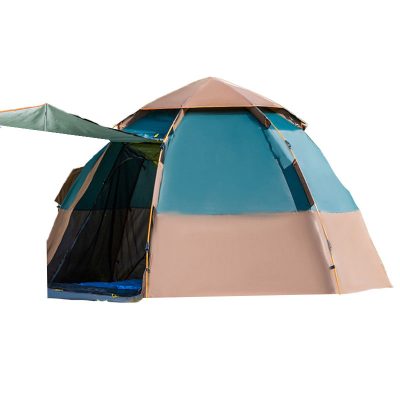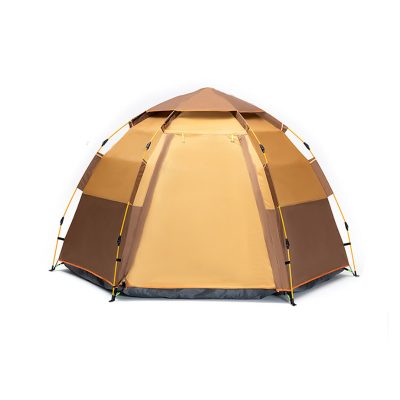The inflatable tent belongs to a kind of tent that adopts the principle of structural mechanics to design the frame. The airbag is inflated to form a rigid cylinder by using the gas pressure characteristics, and the skeleton of the tent is supported by the organic combination. More and more popular with outdoor travelers. Let’s find out together.
1. Fabric:
1. Generally speaking, polyester is thin and light, has high strength, good elasticity, wear resistance and corrosion resistance, and is suitable for mountaineering and hiking campers. Oxford cloth is thick, but heavier, making it suitable for making large tents for drive-through camping or small groups.
2. From the perspective of waterproof coating, although PVC (polyvinyl chloride) is good for waterproofing, it will become hard and brittle in winter, which is prone to creases or breakage; PU (polyurethane) coating can not only overcome the defects of PVC, but also improve the waterproof effect. Also very good.
3. Silver-coated material, can prevent ultraviolet rays, mainly used for leisure beach tents, sunshade tents, advertising tents, etc.
4. Now some ultra-light accounts are more popular. Different from the previous nylon and polyester fabrics coated with PU layer to waterproof the principle, it uses silicon (silicone resin) technology, which is much lighter in weight, but the price will also be a lot more expensive.
2. Lining:
Regarding the inner tent, it usually has two functions, heat preservation, moisture permeability and mosquito prevention. For the previous consideration, it usually also uses polyester taffeta, which has good air permeability and a certain heat preservation ability. To prevent mosquitoes, then the gauze is enough to deal with it, and the high-density mesh is better.
If it is a four-season tent or an alpine tent, there is no doubt that all the inner tents are composed of polyester taffeta to keep warm. If it is a tent or a single tent in summer, almost all of them are gauze for heat dissipation and ventilation. For the three-season account, gauze and polyester taffeta each are a compromise and pragmatic choice.
3. Bottom material:
The main functions of the tent bottom are waterproof, moisture-proof and dust-proof, and the choice of the bottom material also determines the grade of the tent. 1. PE coating primer, low price is the common primer for low-end tents, but it is easy to break after repeated folding. 2. The PU coating primer, both in terms of wear resistance and water resistance, greatly exceeds the PE primer, and the cost performance is relatively high.
Fourth, fabric specifications:
D: called denier value, denier = g/L*9000 where g is the weight of the thread (grams), L is the length of the thread (m), which is used to indicate the weight of the yarn woven into this fabric, The gram weight of a single yarn per 9000 meters is the D number of the fabric. The larger the number before D, the thicker and heavier the fabric fiber of the same area is. Usually tents use 150D or 70D Oxford cloth, taking into account cost/weight/wear resistance.

























